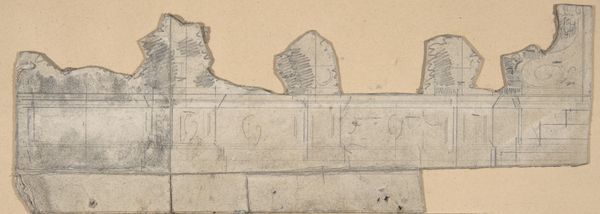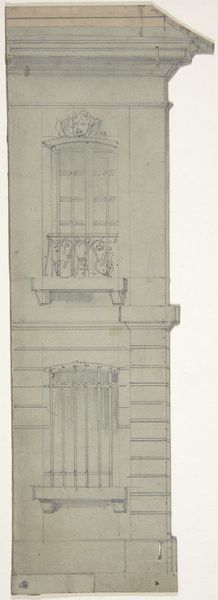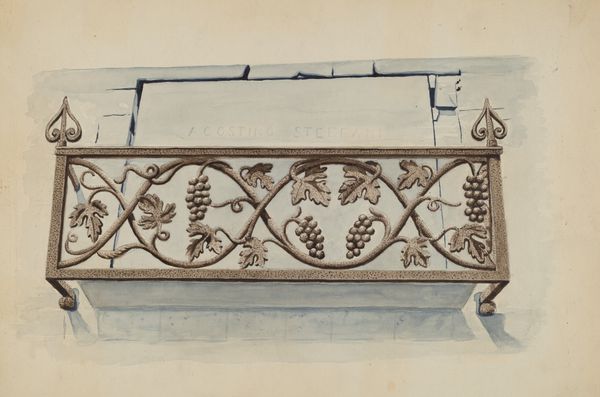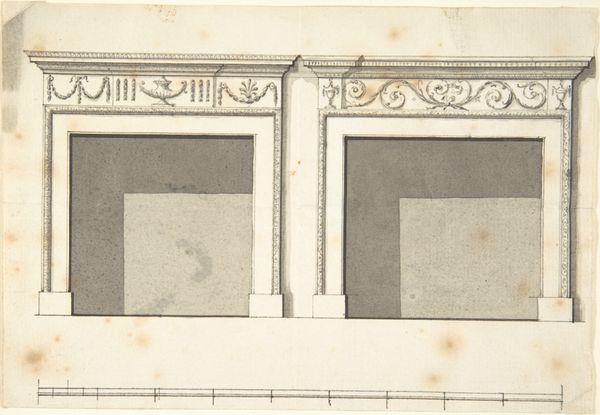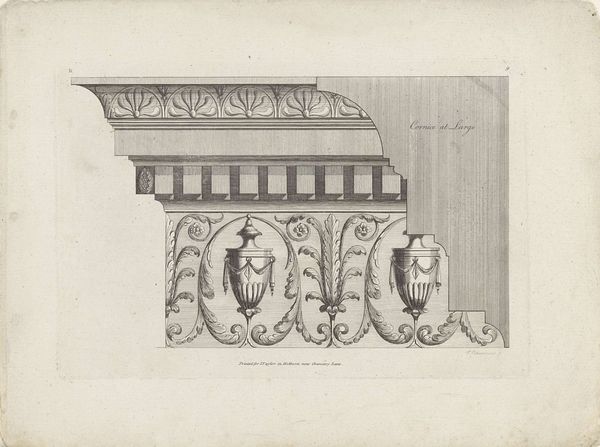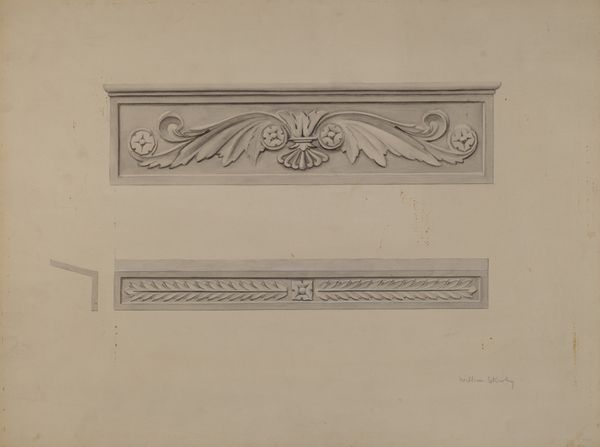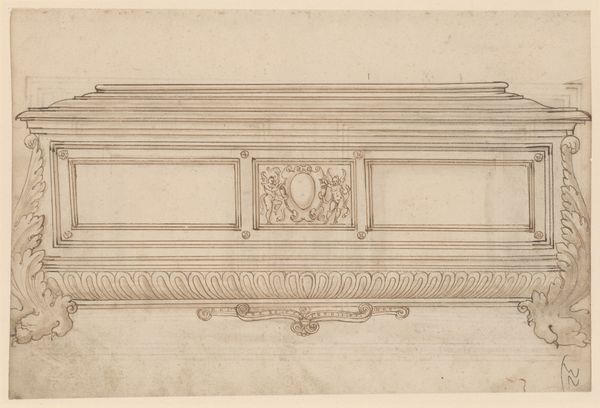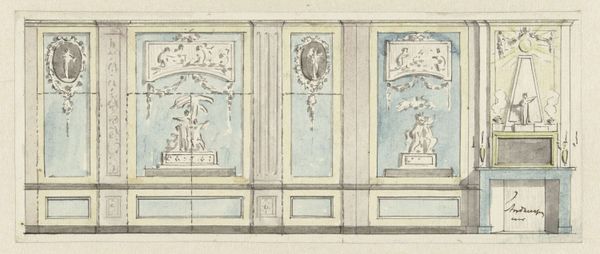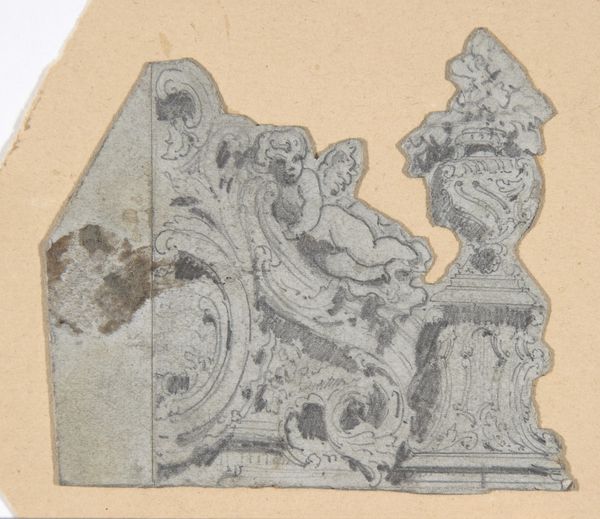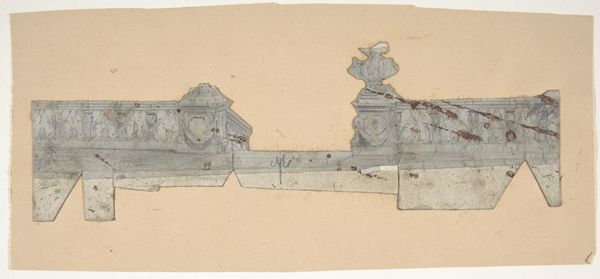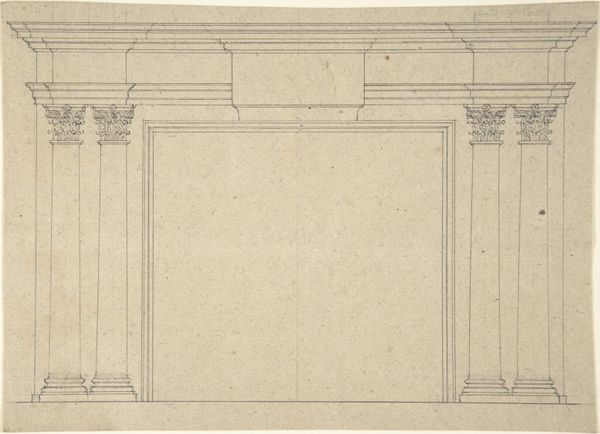
Design for a Stage Set at the Opéra, Paris 1830 - 1890
0:00
0:00
drawing, print, pencil
#
drawing
# print
#
landscape
#
coloured pencil
#
pencil
#
history-painting
#
academic-art
#
watercolor
Dimensions: Irregular sheet: 2 x 4 7/16 in. (5.1 x 11.2 cm)
Copyright: Public Domain
Curator: There's a definite austerity to this, almost architectural in its stark presentation. The cool grays really lend it a somber tone. Editor: That's a keen observation. We're looking at Eugène Cicéri's "Design for a Stage Set at the Opéra, Paris," created sometime between 1830 and 1890. He used pencil, watercolor and colored pencil on paper, which is quite typical for scenic designs of the period. Curator: It makes sense it's a set design—that geometric repetition of form gives it that theatrical monumentality. The vases atop the balustrade are strangely gripping in their simplified design... They speak to ancient grandeur. Editor: It's interesting how stage design allowed artists to experiment with historical motifs. It was not simply an aesthetic choice, however. Opulence was critical in the construction of a compelling mythos, imbuing the stage and spectators with a sense of the spectacle of history. Curator: And spectacle comes at a cost—often unseen and behind the stage. To me, those repeated Egyptian motifs suggest power, mystery and perhaps, a certain exotic allure that Paris wanted to project on stage and by extension on itself. The visual lexicon builds a symbolic continuity with great, ancient empires. Editor: Exactly. And beneath this veneer is the very real work and economic structures that created it: The paper, pencils, watercolor and skill needed all had material consequences. These are the often forgotten elements that contributed to a piece that has, in a sense, symbolically masked it’s very reality of how it was constructed. Curator: A really incisive perspective— the very physical components fading beneath layers of cultural associations. Editor: The material speaks to the cultural... in equal measure. Considering both creates a more layered history, and opens this "Design for a Stage Set" into broader considerations than a brief, momentary entertainment. Curator: Indeed, that constant tug between symbolism and material reality is a useful guide for us through art. Editor: Absolutely, it grounds us as we examine all the dazzling heights humans are willing to erect— literally and figuratively.
Comments
No comments
Be the first to comment and join the conversation on the ultimate creative platform.

